ASTANA — Once the fourth largest lake in the world, the Aral Sea now stands as an example of an ecological disaster of our time. Spanning six million hectares, with 2.8 million hectares in Kazakhstan and 3.2 million hectares in Uzbekistan, this region now generates over 100 million tons of dust and toxic salt annually. The scale of the catastrophe is unimaginable; where the sea once stood now lies a vast expanse of desert – the Aralkum Desert.
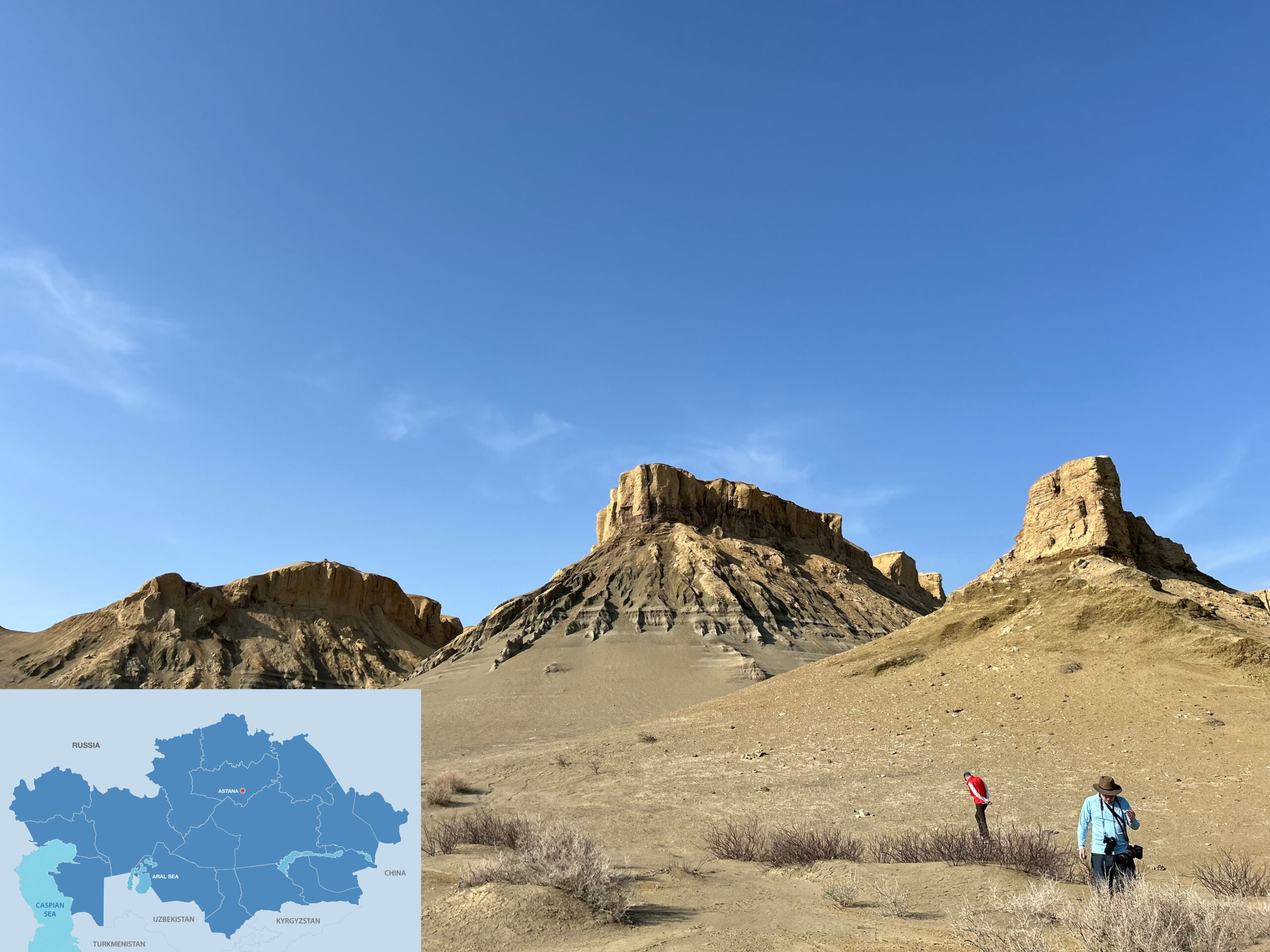
Water levels of the Aral Sea used to reach the chinks, our expedition took a walk on what used to be a seabed of the Aral Sea. Photo credit: The Astana Times. Click to see the map in full size. The map is designed by The Astana Times
The Kazakh government and international organizations have been working for years to address the aftermath of the ecological catastrophe, particularly focusing on alleviating the burden on local populations. The local communities have had to adapt their lives drastically following the collapse of the lucrative fishing industry that flourished during the Aral Sea’s heyday.
I had the opportunity to join an expedition led by the United States Agency for International Development (USAID) to the Aral Sea basin in the Kyzylorda Region of Kazakhstan. Our mission was to see firsthand the 500-hectare Oasis project on the Aral Sea’s former shores. The sight of the Aralkum Desert, once the seabed of the Aral Sea, was both mesmerizing and alarming.
Witnessing tragedy: a journey to Akespe village
Our journey took us to Akespe village, once bustling with life from its fishing activities. Here, the consequences of receding water levels were starkly evident, with houses now buried under sand, silent reminders of the Aral Sea’s tragic fate.
U.S. Ambassador to Kazakhstan David Rosenblum, who accompanied us on the expedition, said it is important to witness the landscape’s dramatic transformation firsthand.
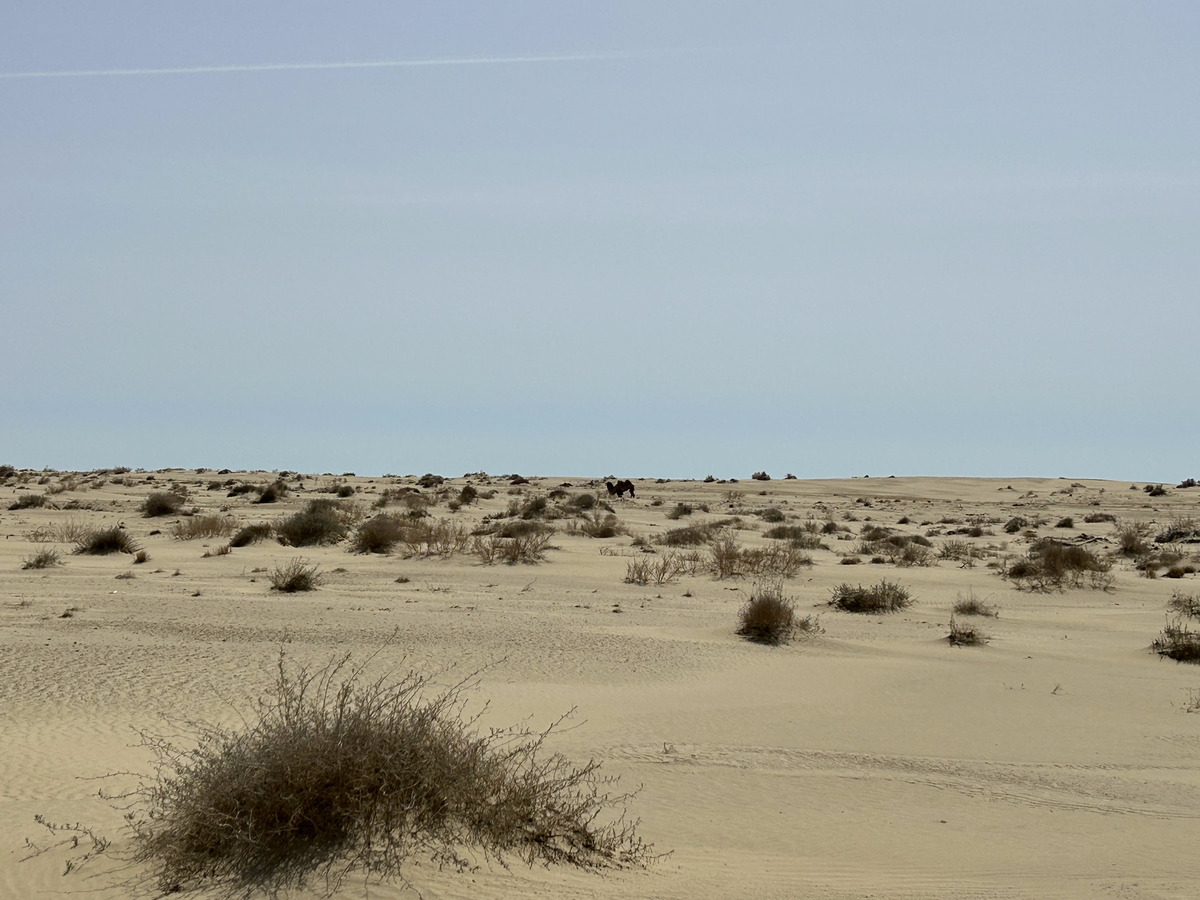
Akespe village, once a thriving fisherman community, today is a silent reminder of the Aral Sea’s tragic fate. Photo credit: The Astana Times
“This visit is a way of understanding what’s happened to the Aral Sea that you can’t get from reading about it. You can’t just get it from reading a book or an article. So it’s incredibly useful, not just for me but for the entire group that’s come here today. It helps me understand the scope of the problem and also some of the things we’re doing about it,” Ambassador Rosenblum said.
Ambassador Rosenblum noted the resilience of local communities in adapting to the changes as one of the most inspiring aspects.
“We learned how the local villagers here have changed their occupation somewhat and gotten into raising camels and horses over the years to replace the fishing industry and how the village has moved several times to be in a more stable place,” he said.
Planting hope: USAID’s Oasis Project takes root
The Oasis project, supported by USAID and the Kazakh government, aims to restore the environment in the Aral Sea region. With a budget of $1.35 million, the initiative focuses on planting black saxaul trees to stabilize the desert landscape and prevent sandstorms.
According to Dr. Kevin Adkin, a regional environment specialist for the USAID/Central Asia Regional Mission’s Economic Development Office, planting saxaul trees in the desert region should facilitate in reducing sandstorms, stabilizing soil, and initiating the restoration of the ecosystem.
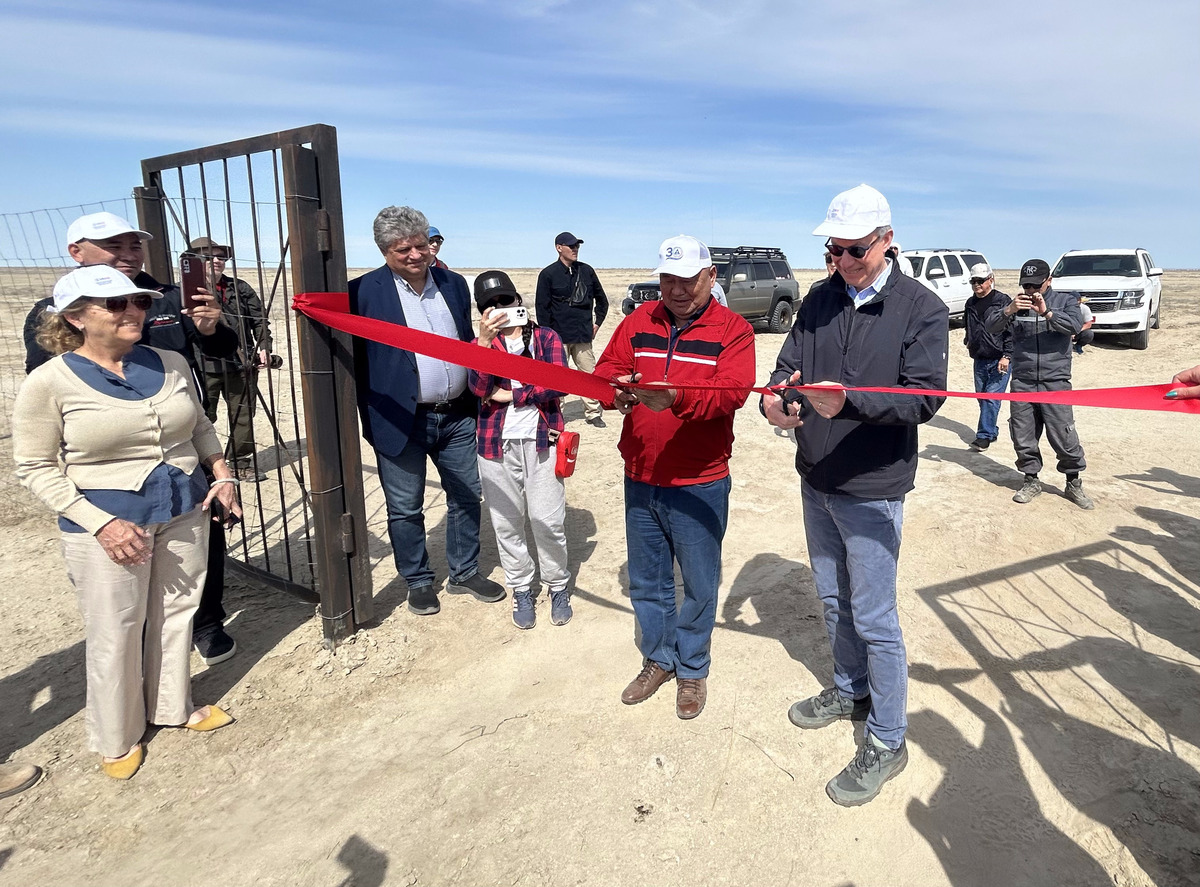
US Ambassador Rosenblum and Mukataev, Director of Executive Directorate of the International Fund for Saving the Aral Sea in Kazakhstan opening the Oasis on April 15. Photo credit: The Astana Times
The lack of vegetation on the sea bottom threatens the region due to years of chemical and salt buildup. Planting saxaul trees is seen as a solution because their robust root system helps stabilize the soil and can hold up to four tons of sand, effectively countering the sand and dust storms in the area. Innovative methods for planting saxaul, such as hydrogel, help retain large quantities of water without altering their structure. Encouragingly, initial reports from specialists indicate a promising 78% survival rate among root-balled nursery trees, surpassing the anticipated 50%.
Serikaliy Mukataev, director of the Executive Directorate of the International Fund for Saving the Aral Sea (ED IFAS) in Kazakhstan, emphasized USAID’s invaluable support in mitigating the consequences of what he called “the youngest desert in the world” for the local population.
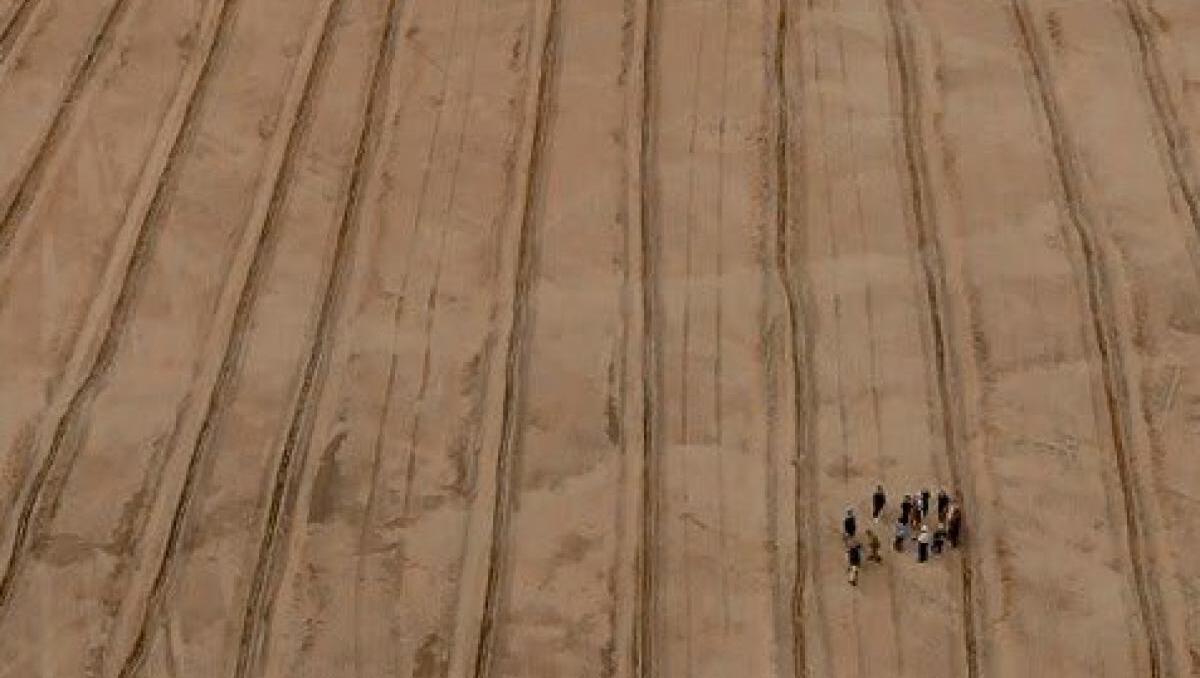
The aerial shot of the Oasis project. Photo credit: USAID
“Planting saxaul here is crucial for mitigating the desert’s impact on the population,” he stressed.
He shared that only half of the 2.2 million hectares of the dried seabed of the Aral Sea on Kazakh territory are suitable for planting. The Oasis project aims to contribute to environmental improvement in the Aral Sea basin. Mukataev highlighted the project’s uniqueness, emphasizing its potential to test various saxaul planting methods and share best practices with government agencies and non-government organizations.
During a visit to the site, Ambassador Rosenblum hailed the Oasis project as a symbol of hope for restoring the Aral Sea’s flora and fauna.
“This site, this oasis, is a symbol of the US-Kazakhstan partnership to work together to try to reverse this environmental catastrophe,” he said.
Diplomatic evolution and environmental cooperation
Rosenblum expressed optimism regarding the potential of the Aral Sea region, stating that concerted efforts could transform it into a true oasis: a vibrant ecosystem abundant with water, flourishing flora and fauna, and thriving communities. He underscored the importance of partnership in addressing environmental challenges and expressed optimism about the region’s potential for rejuvenation. Rosenblum observed a notable evolution in Central Asian relations from the perspective of the United States, attributing it to a growing willingness among the region’s countries to collaborate.
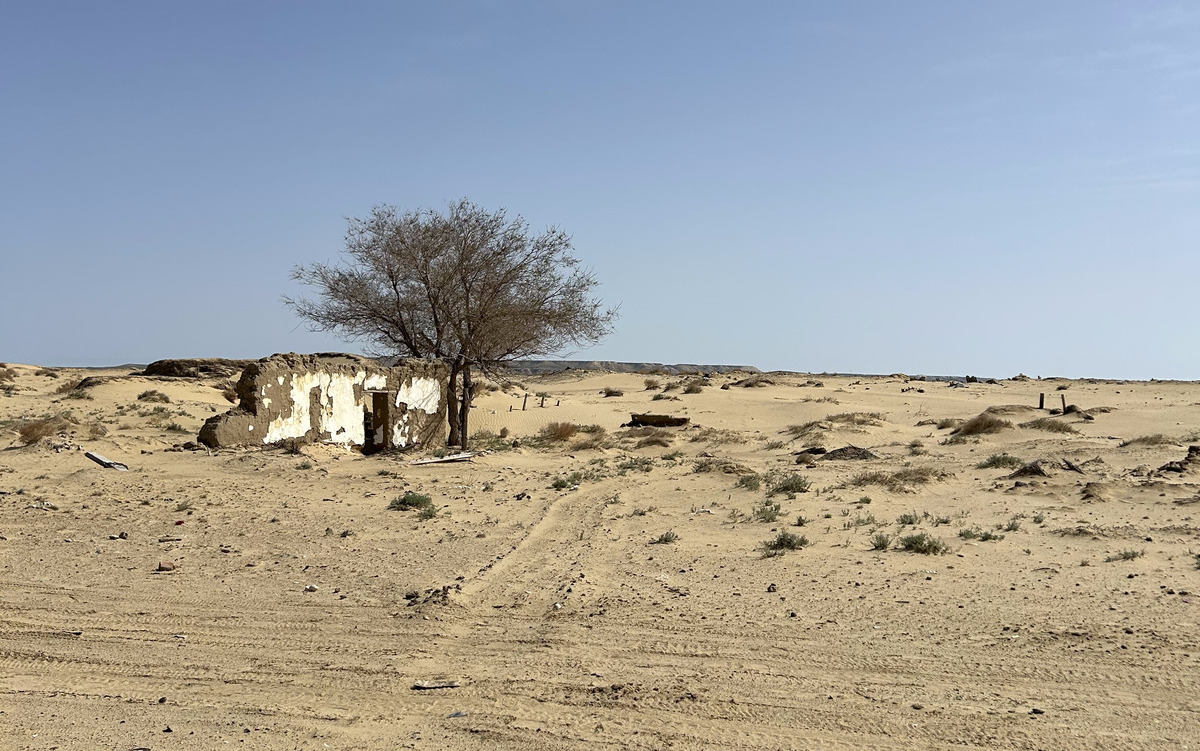
The consequences of receding water levels in Akespe village are starkly evident, with houses now buried under sand. Photo credit: The Astana Times
“What I’ve seen over the years, because I’ve been involved in Central Asian relations from the US side for many years now, is a real increased willingness to cooperate in the countries of the region. I think it used to be harder. It’s improved considerably. I think that has something to do with the political will, you might say, on the part of the leadership of each of the countries recognizing that they have to cooperate,” he said.
Monique Mosolf, a regional deputy mission director for USAID’s Central Asia Regional Mission, highlighted the significance of countries working together on climate change-related issues. The Aral Sea project, if successful, could serve as a model for such cooperation.
“It’s a great testament and proof to that concept that if we’re going to address global problems, such as climate change, energy, water shortages, this country, this region must work together. But the region is also well positioned to work together,” she said.

